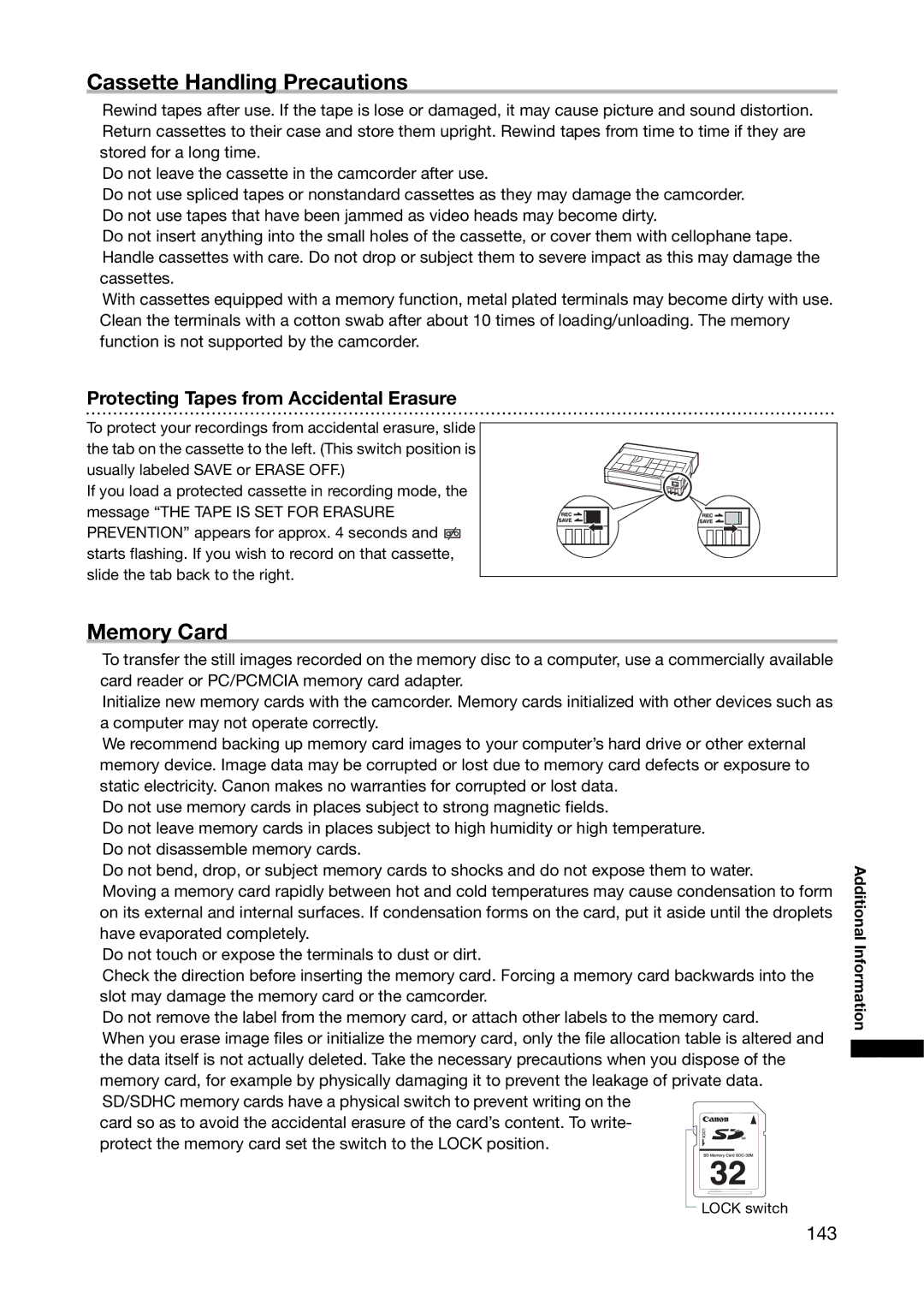
Cassette Handling Precautions
Rewind tapes after use. If the tape is lose or damaged, it may cause picture and sound distortion. Return cassettes to their case and store them upright. Rewind tapes from time to time if they are
stored for a long time.
Do not leave the cassette in the camcorder after use.
Do not use spliced tapes or nonstandard cassettes as they may damage the camcorder. Do not use tapes that have been jammed as video heads may become dirty.
Do not insert anything into the small holes of the cassette, or cover them with cellophane tape. Handle cassettes with care. Do not drop or subject them to severe impact as this may damage the
cassettes.
With cassettes equipped with a memory function, metal plated terminals may become dirty with use. Clean the terminals with a cotton swab after about 10 times of loading/unloading. The memory function is not supported by the camcorder.
Protecting Tapes from Accidental Erasure
To protect your recordings from accidental erasure, slide the tab on the cassette to the left. (This switch position is usually labeled SAVE or ERASE OFF.)
If you load a protected cassette in recording mode, the message “THE TAPE IS SET FOR ERASURE PREVENTION” appears for approx. 4 seconds and ![]() starts flashing. If you wish to record on that cassette, slide the tab back to the right.
starts flashing. If you wish to record on that cassette, slide the tab back to the right.
Memory Card
To transfer the still images recorded on the memory disc to a computer, use a commercially available card reader or PC/PCMCIA memory card adapter.
Initialize new memory cards with the camcorder. Memory cards initialized with other devices such as a computer may not operate correctly.
We recommend backing up memory card images to your computer’s hard drive or other external memory device. Image data may be corrupted or lost due to memory card defects or exposure to static electricity. Canon makes no warranties for corrupted or lost data.
Do not use memory cards in places subject to strong magnetic fields.
Do not leave memory cards in places subject to high humidity or high temperature. Do not disassemble memory cards.
Do not bend, drop, or subject memory cards to shocks and do not expose them to water.
Moving a memory card rapidly between hot and cold temperatures may cause condensation to form on its external and internal surfaces. If condensation forms on the card, put it aside until the droplets have evaporated completely.
Do not touch or expose the terminals to dust or dirt.
Check the direction before inserting the memory card. Forcing a memory card backwards into the slot may damage the memory card or the camcorder.
Do not remove the label from the memory card, or attach other labels to the memory card.
When you erase image files or initialize the memory card, only the file allocation table is altered and the data itself is not actually deleted. Take the necessary precautions when you dispose of the memory card, for example by physically damaging it to prevent the leakage of private data.
SD/SDHC memory cards have a physical switch to prevent writing on the card so as to avoid the accidental erasure of the card’s content. To write- protect the memory card set the switch to the LOCK position.
LOCK switch
